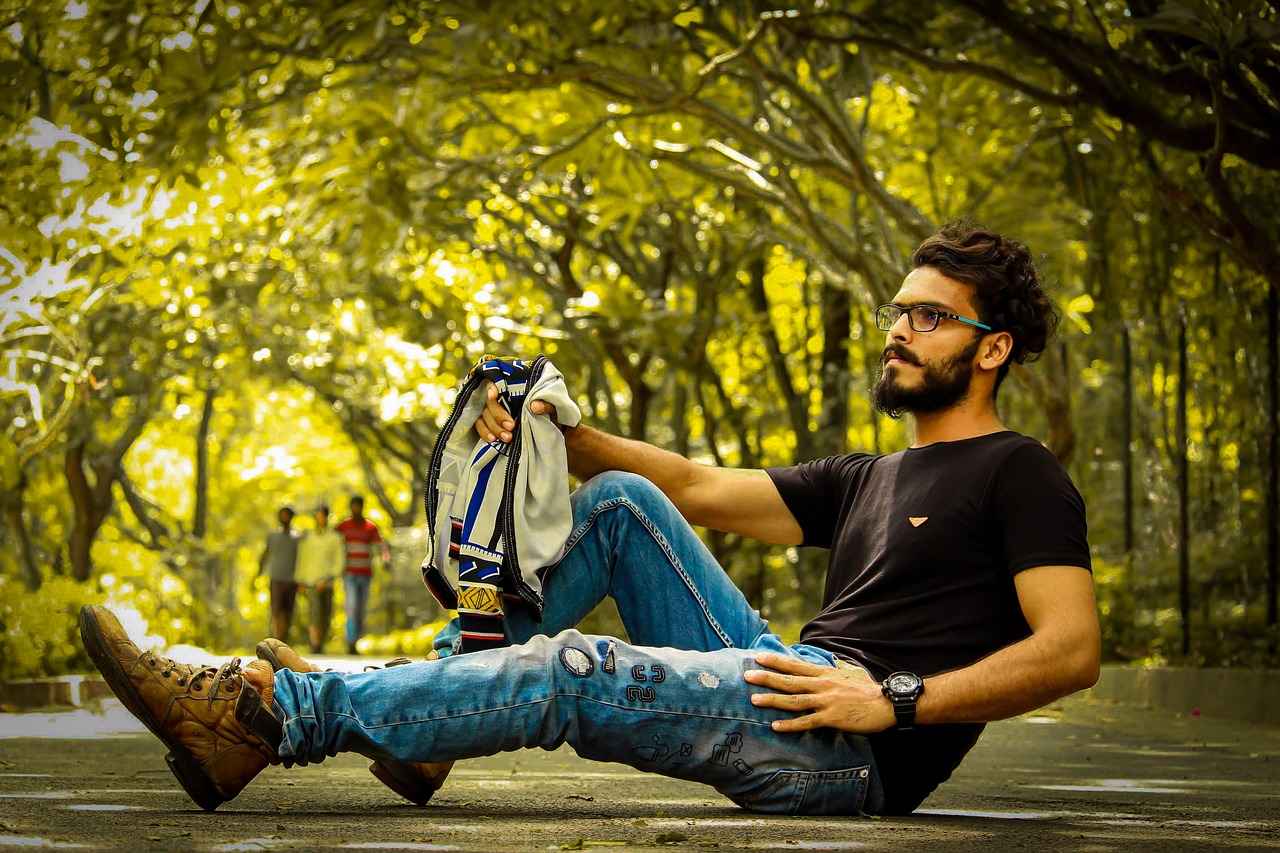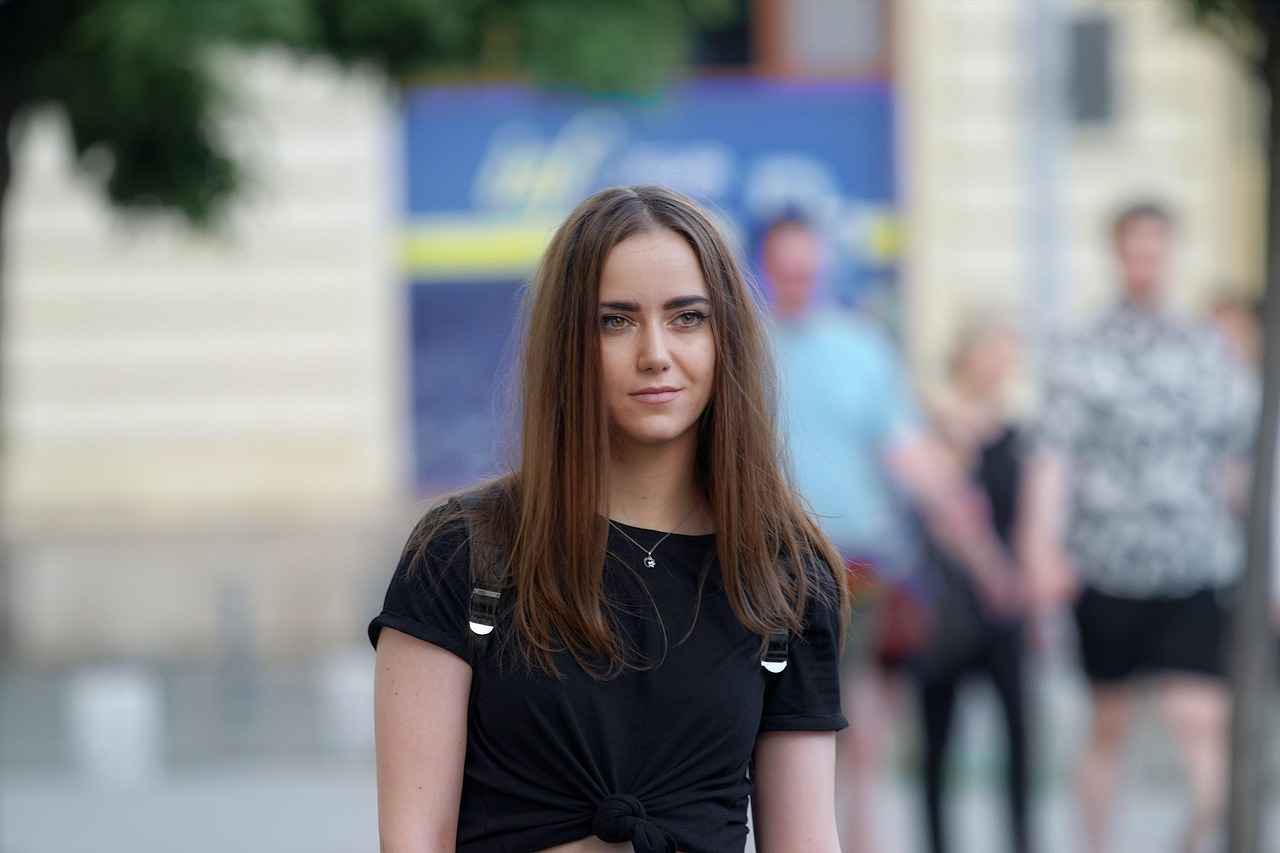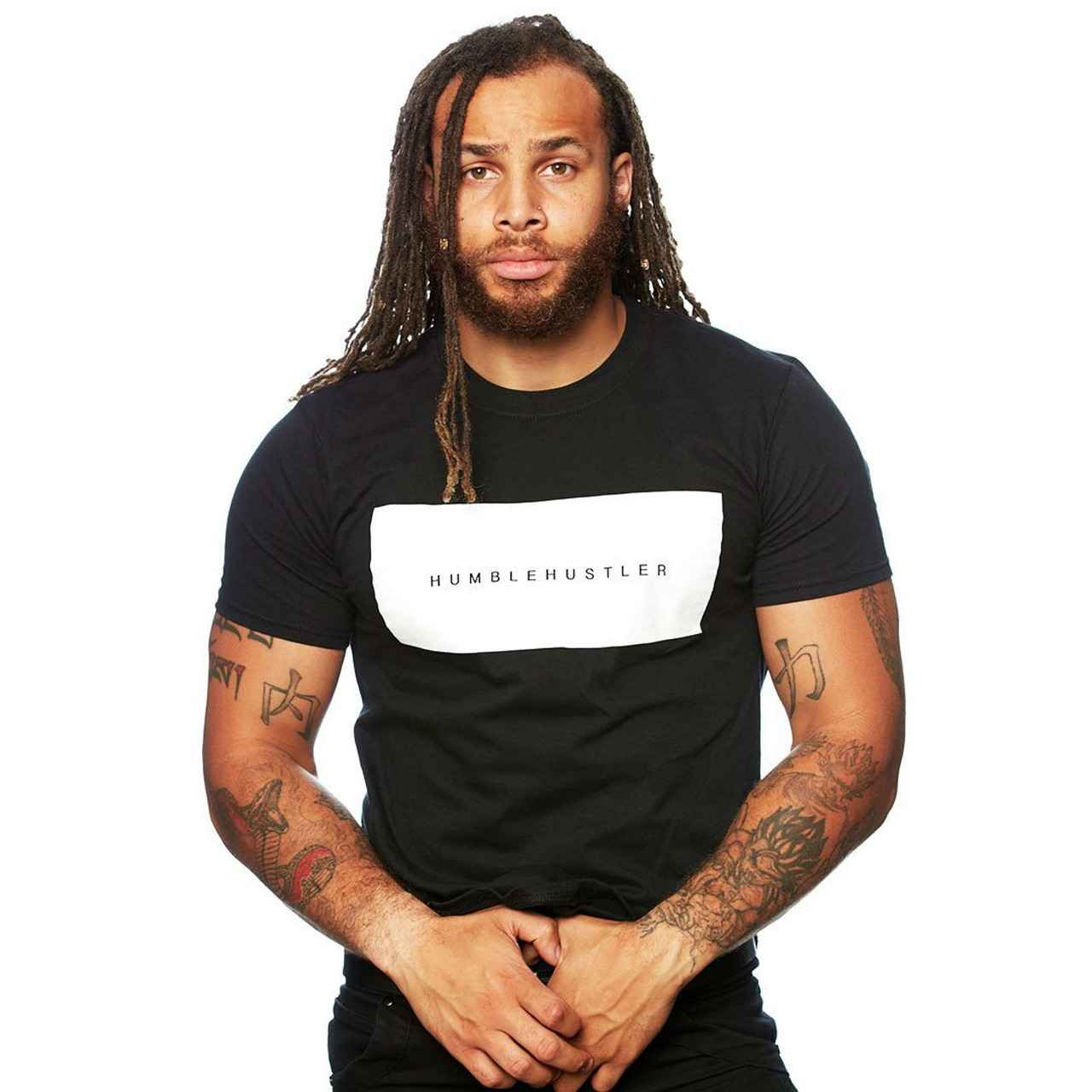This article delves into the exciting world of creating custom shirts without the limitation of minimum order quantities. Whether you’re a small business owner, an artist, or simply someone looking to express their individuality, custom shirts offer a fantastic way to showcase your creativity. Here, we provide a comprehensive guide on the design process, printing methods, and tips for selecting the right suppliers.
Understanding Custom Shirt Printing
Custom shirt printing is a versatile way to create unique apparel that reflects personal style or brand identity. There are several printing techniques available, each suited to different designs and materials. Popular methods include:
- Screen Printing: Ideal for large batches, offering vibrant colors and durability.
- Direct-to-Garment (DTG): Best for intricate designs and small orders, allowing for detailed prints.
- Heat Transfer: Suitable for both small and large designs, providing a smooth finish.
Benefits of No Minimum Order Requirement
The flexibility of ordering custom shirts without minimum quantities is a game-changer for many. It allows individuals and small businesses to:
- Test designs without committing to large orders.
- Reduce waste by producing only what is needed.
- Experiment with different styles and fabrics.
Cost-Effectiveness for Small Orders
Traditionally, small orders can be expensive due to setup fees and production costs. However, many suppliers now offer competitive pricing for smaller quantities, making it easier to create custom shirts without breaking the bank.
Finding Affordable Printing Services
When searching for printing services, consider the following tips to ensure you find budget-friendly options:
- Compare quotes from multiple suppliers.
- Look for online reviews and testimonials.
- Check for seasonal discounts or promotions.
Designing Your Custom Shirt
The design is crucial for a successful custom shirt. Utilize design tools like Canva or Adobe Illustrator to create appealing graphics that resonate with your audience. Keep in mind the importance of color, typography, and imagery in your design.
Choosing the Right Fabric and Style
The fabric and style of your shirt significantly impact both comfort and aesthetics. Popular fabric choices include:
- Cotton: Soft, breathable, and perfect for everyday wear.
- Polyester: Durable and moisture-wicking, great for active wear.
- Blends: Combining cotton and polyester for the best of both worlds.
Conclusion: Making Your Custom Shirt Dreams a Reality
In conclusion, creating custom shirts without minimum order requirements is not only feasible but also an exciting opportunity to express your creativity. With the right knowledge and resources, you can embark on your custom shirt journey and bring your ideas to life.

Understanding Custom Shirt Printing
Custom shirt printing is a fantastic way for both individuals and businesses to express their creativity through unique apparel. With the evolution of technology, various printing techniques have emerged, each offering distinct advantages depending on the design and materials used. This section delves into some of the most popular printing methods, highlighting their suitability for different types of designs.
- Screen Printing: This traditional method involves creating a stencil (or screen) and using it to apply layers of ink on the fabric. It is particularly effective for large orders and designs with few colors, making it a cost-effective option for bulk production.
- Direct-to-Garment (DTG) Printing: DTG printing allows for high-resolution images and intricate designs. It works similarly to an inkjet printer, applying ink directly onto the fabric. This method is ideal for small orders and designs with many colors, but it may not be as durable as screen printing.
- Heat Transfer Printing: This technique involves printing a design onto a special transfer paper and then using heat to transfer the design onto the fabric. It is suitable for small runs and offers a quick turnaround, making it popular for custom designs.
- Sublimation Printing: Sublimation is a method that uses heat to transfer dye onto materials, resulting in vibrant and long-lasting prints. It works best on polyester fabrics and is perfect for all-over designs.
When choosing a printing technique, consider factors such as the complexity of your design, the quantity of shirts needed, and the fabric type. Each method has its strengths and limitations, so understanding these can help ensure that your custom shirts meet your expectations.
In summary, custom shirt printing opens up a world of possibilities for personal expression and branding. By selecting the right printing technique, you can create apparel that truly reflects your vision.

Benefits of No Minimum Order Requirement
Opting for no minimum order requirements in custom shirt production provides significant advantages, particularly for small businesses and personal projects. This approach allows individuals to create unique apparel without the pressure of ordering large quantities, making it an appealing option for many.
One of the primary benefits of this flexibility is the cost-effectiveness. Small businesses often face challenges when trying to manage their budgets, and committing to a large order can be financially daunting. By choosing a supplier that offers no minimum order, businesses can produce just a few shirts at a time, allowing them to test designs or cater to specific customer requests without overspending.
Another advantage is the ability to experiment with designs. With no minimum order, creators can explore various styles, colors, and graphics without the fear of being stuck with unsold inventory. This freedom fosters creativity and innovation, enabling businesses to respond quickly to trends or customer feedback.
Moreover, this flexibility is particularly beneficial for personal projects. Whether it’s for a family reunion, a sports team, or a special event, individuals can order exactly what they need without the hassle of meeting a minimum requirement. This convenience makes custom shirts accessible to everyone, regardless of their budget or needs.
In addition, the quality of the shirts remains a crucial factor. Many suppliers who offer no minimum order requirements also maintain high standards for print quality and fabric selection. This ensures that even small orders can result in high-quality products, meeting the expectations of customers.
In conclusion, the benefits of opting for no minimum order requirements are clear. This approach not only offers financial flexibility but also encourages creativity and accessibility for both businesses and individuals. By selecting the right suppliers, anyone can create custom shirts tailored to their specific needs without the burden of large orders.
Cost-Effectiveness for Small Orders
Ordering custom shirts in small quantities can often be a daunting task for individuals and small businesses. However, the rise of printing services with no minimum order requirements has changed the landscape, making it easier and more affordable to create personalized apparel. This section delves into how you can effectively save money while ordering fewer shirts, ensuring that you get the best value for your investment.
- Evaluate Your Needs: Before placing an order, assess how many shirts you genuinely need. This will help prevent over-ordering and unnecessary expenses.
- Choose Affordable Printing Options: Research various printing services that offer competitive pricing without compromising quality. Many online platforms specialize in small orders, allowing you to compare costs easily.
- Take Advantage of Bulk Discounts: Even if you’re ordering a few shirts, some suppliers may offer discounts for multiple designs. Consider ordering different styles or colors to maximize savings.
- Utilize Online Design Tools: Many printing services provide free online design tools that allow you to create your custom shirt graphics without additional costs. This can significantly cut down on design fees.
- Consider Fabric and Style: Selecting the right fabric and style can impact the overall cost. Opting for simpler styles and materials can keep expenses low while still delivering a great product.
Additionally, it’s essential to prioritize quality over quantity. When ordering fewer shirts, ensure that you select a reputable printing service known for its high-quality prints. This will not only enhance the look of your shirts but also improve their longevity, providing better value for your money in the long run.
In conclusion, leveraging the benefits of no minimum order requirements can lead to substantial savings when ordering custom shirts. By carefully evaluating your needs and making informed choices, you can create stunning apparel that meets your budget and style preferences.
Finding Affordable Printing Services
can be a daunting task, especially when you’re aiming to create custom shirts without a minimum order requirement. However, with the right approach, you can discover budget-friendly options that do not compromise on quality. Here are some practical tips to guide you through the process:
- Research Multiple Suppliers: Start by exploring various printing services online. Websites like Custom Ink and Vistaprint offer competitive pricing and customizable options. Compare their offerings and read reviews to gauge customer satisfaction.
- Check for Discounts and Promotions: Many printing companies run seasonal promotions or offer discounts for first-time customers. Keep an eye out for these deals to save on your order.
- Request Samples: Before committing to a large order, request samples of their work. This allows you to assess the quality of their printing and fabric, ensuring you receive a product that meets your expectations.
- Utilize Online Design Tools: Some printing services provide free online design tools that can help you create your custom shirt without needing professional design software. This can save you additional costs associated with hiring a designer.
- Consider Bulk Ordering: If you anticipate needing more shirts in the future, consider ordering a larger quantity upfront. Many services offer discounts for bulk orders, which can significantly reduce the per-shirt cost.
- Negotiate Prices: Don’t hesitate to reach out to the printing service to discuss pricing. Some companies may be willing to negotiate, especially if you are planning to make repeat orders.
By following these tips, you can successfully find affordable printing services that fit your budget while ensuring high-quality results. Remember, investing time in research and comparison can lead to significant savings and a satisfactory custom shirt experience.
Quality vs. Quantity
is a crucial consideration when it comes to custom shirt printing, especially for those looking to order fewer shirts. In this section, we will explore how to maintain high-quality prints even when placing small orders, ensuring that your custom shirts meet your expectations.
When you order a limited number of shirts, the quality of materials and printing becomes paramount. Here are some essential factors to consider:
- Choose High-Quality Fabrics: Opt for premium fabrics that not only feel good but also hold prints well. Cotton and cotton blends are popular choices due to their durability and comfort.
- Invest in Professional Printing Services: Look for printing companies that specialize in small runs. They often have the expertise and equipment to deliver high-quality results, even for smaller orders.
- Review Sample Prints: Before placing a large order, request samples to evaluate the print quality. This step allows you to assess color accuracy and fabric compatibility.
- Consider Print Techniques: Different printing methods yield varying results. For small orders, techniques like direct-to-garment (DTG) printing can offer superior quality and detail compared to traditional methods.
- Focus on Design Simplicity: Complex designs may not translate well on small runs. Simplifying your design can enhance print quality and reduce costs.
By prioritizing these elements, you can ensure that your custom shirts not only look great but also last longer, providing value for your investment. Remember, even with fewer shirts, quality should never be compromised.
In conclusion, while ordering in smaller quantities can pose challenges, it also opens up opportunities for unique and personalized apparel. By focusing on quality over quantity, you can create custom shirts that truly stand out.
Designing Your Custom Shirt
Creating a custom shirt that stands out requires a solid understanding of design principles and the right tools. An effective design is not just about aesthetics; it plays a crucial role in conveying your message and brand identity. In this section, we will explore essential design elements and resources to help you craft visually appealing graphics for your custom shirts.
- Color Theory: The choice of colors can evoke emotions and influence perceptions. Utilize a color wheel to find complementary colors that enhance your design.
- Typography: Select fonts that reflect your brand’s personality. Ensure that the text is legible and harmonizes with the overall design.
- Imagery: High-quality images or graphics are vital. Use vector graphics for scalability, ensuring your designs maintain quality at any size.
- Layout: A well-structured layout guides the viewer’s eye. Balance elements to create a cohesive look that is both attractive and functional.
To assist in the design process, there are numerous design tools available:
- Adobe Illustrator: A professional vector graphic design software that provides advanced features for creating detailed designs.
- Canva: An accessible online tool ideal for beginners, offering templates and an intuitive drag-and-drop interface.
- Inkscape: A free, open-source vector graphics editor that is a great alternative to paid software.
Once your design is ready, it’s essential to consider how it will be printed on the shirt. Different printing techniques, such as screen printing and direct-to-garment, can impact the final look of your design. Always consult with your printing service to ensure your design is compatible with their methods.
In conclusion, effective design is a critical component in the creation of custom shirts. By understanding design principles and utilizing the right tools, you can produce eye-catching graphics that resonate with your audience.

Choosing the Right Fabric and Style
The fabric and style of a shirt are crucial elements that affect both comfort and aesthetics. Selecting the right combination can enhance your overall experience, whether you’re designing for casual wear, professional settings, or promotional events. This section aims to guide you in making informed choices that meet your specific needs.
Popular Fabric Choices
- Cotton: Renowned for its softness and breathability, cotton is a classic choice. It’s perfect for everyday wear and can be easily printed on.
- Polyester: This fabric is durable and resistant to shrinking and stretching. It’s ideal for athletic wear due to its moisture-wicking properties.
- Blends: Cotton-polyester blends combine the best of both worlds, offering comfort and durability. They are often more affordable and easier to care for.
- Linen: Lightweight and breathable, linen is perfect for hot weather. However, it wrinkles easily, which may not suit all styles.
Styles and Cuts for Custom Shirts
Choosing the right style can significantly enhance the visual appeal of your custom shirt. Here are some popular styles to consider:
- Classic Fit: Offers a traditional silhouette that is neither too tight nor too loose, making it a versatile option.
- Slim Fit: Tailored for a modern look, this style is ideal for those who prefer a more fitted appearance.
- Relaxed Fit: This style provides extra room for comfort, making it suitable for casual outings.
- V-Neck vs. Crew Neck: The neckline can drastically change the look of a shirt. V-necks offer a more elegant appearance, while crew necks are classic and casual.
In conclusion, the fabric and style of your custom shirt play a vital role in determining both comfort and aesthetic appeal. By understanding the characteristics of different fabrics and styles, you can make choices that align with your personal preferences and the intended use of the shirt. Whether you’re dressing for a formal occasion or a casual day out, the right selection will ensure you look and feel your best.
Popular Fabric Choices
Choosing the right fabric for custom shirts is essential as it directly affects comfort, durability, and style. Different fabrics offer unique benefits tailored to various needs and preferences. This section delves into some of the most popular fabric options for custom shirts, highlighting their characteristics and advantages.
- Cotton: One of the most widely used fabrics, cotton is known for its softness and breathability. It is ideal for casual wear and is comfortable against the skin. Cotton shirts are easy to care for and can be machine washed, making them a practical choice for everyday use.
- Polyester: This synthetic fabric is durable and resistant to wrinkles and shrinking. Polyester shirts are often used in athletic wear because they wick moisture away from the body, keeping the wearer dry and comfortable during physical activities. They also hold colors well, making them perfect for vibrant designs.
- Blends: Fabric blends, such as cotton-polyester mixes, combine the best qualities of both materials. These shirts are soft yet durable, offering comfort along with resistance to wrinkles. Blends are versatile and suitable for various occasions, from casual to semi-formal.
- Linen: Known for its lightweight and breathable properties, linen is perfect for warm weather. It has a unique texture and a relaxed appearance, making it an excellent choice for summer shirts. However, linen wrinkles easily, which may require more frequent ironing.
- Rayon: This semi-synthetic fabric is soft and drapes beautifully, providing an elegant look. Rayon shirts are breathable and comfortable, making them suitable for both casual and formal settings. They can mimic the feel of silk at a lower cost.
In summary, selecting the right fabric for custom shirts is crucial for achieving the desired look and feel. By understanding the characteristics of each fabric type, you can make informed decisions that align with your personal style and practical needs.
Styles and Cuts for Custom Shirts
When it comes to creating custom shirts, the style and cut play a crucial role in determining the overall appeal and functionality of the garment. Selecting the right style can significantly enhance the visual impact and comfort of the shirt, making it essential to explore various options available for customization.
There are several popular styles and cuts to consider when designing custom shirts:
- Classic Fit: This traditional style is characterized by a relaxed fit that provides ample room in the chest and waist. It’s ideal for those who prioritize comfort and a timeless look.
- Modern Fit: A balance between classic and slim fits, modern fit shirts offer a tailored look without being too tight. This style is perfect for both casual and semi-formal occasions.
- Slim Fit: Designed to hug the body more closely, slim fit shirts are a popular choice for a sleek, contemporary appearance. They work well for individuals who prefer a more fitted silhouette.
- V-Neck and Crew Neck: The neckline can dramatically change the shirt’s style. V-neck shirts offer a more stylish and elongated appearance, while crew necks provide a classic look.
- Short Sleeve vs. Long Sleeve: Depending on the season and occasion, choosing between short and long sleeves can affect the shirt’s versatility. Short sleeves are great for warmer weather, while long sleeves offer more coverage.
Additionally, customization options such as graphic designs, embroidery, and color choices can further enhance the appeal of the selected style. By combining the right cut with personalized elements, you can create a shirt that not only looks great but also reflects your unique personality or brand identity.
Ultimately, the choice of style and cut should align with the intended use of the shirt, whether for casual wear, promotional events, or team uniforms. Exploring these options allows for a tailored approach that meets both aesthetic and functional needs.

Printing Techniques Explained
When it comes to creating custom shirts, understanding various printing techniques is crucial for achieving the desired outcome. Each method has unique characteristics that make it suitable for different designs and materials. In this section, we will explore three popular printing techniques: screen printing, heat transfer, and direct-to-garment (DTG).
- Screen Printing: This traditional method involves creating a stencil (or screen) and using it to apply layers of ink onto the fabric. It is ideal for designs with few colors, as it allows for vibrant, long-lasting prints. Screen printing is cost-effective for bulk orders but may not be practical for small runs due to setup costs.
- Heat Transfer: This technique uses heat to transfer a design from a special paper onto the fabric. It is versatile and can produce intricate designs with multiple colors. Heat transfer is suitable for small orders and allows for quick turnaround times. However, the prints may not be as durable as screen printing, especially after multiple washes.
- Direct-to-Garment (DTG): DTG printing is a modern method that uses inkjet technology to print directly onto the fabric. It is perfect for complex designs and allows for full-color prints. DTG is ideal for small batches or one-off designs, but it may have a higher cost per unit compared to screen printing.
Each printing technique has its strengths and weaknesses, and the choice depends on various factors such as design complexity, order quantity, and budget. Understanding these methods will help you select the right approach for your custom shirt project, ensuring that you achieve the best possible results.
In conclusion, whether you opt for screen printing, heat transfer, or direct-to-garment printing, knowing the differences will empower you to make informed decisions that align with your creative vision and practical needs.
Screen Printing vs. Digital Printing
is a crucial topic for anyone looking to create custom shirts. Each method has its own set of advantages, making them suitable for different needs and preferences. In this section, we will explore the key differences between screen printing and digital printing, helping you make an informed decision for your custom apparel project.
Screen Printing is a traditional method that involves creating a stencil (or screen) and using it to apply layers of ink onto the fabric. This technique is particularly effective for large batches of shirts, as it allows for vibrant colors and durable prints. The main advantages of screen printing include:
- Cost Efficiency: For large orders, screen printing becomes increasingly economical, as the setup costs are spread over many items.
- Vibrant Colors: It produces bright, opaque colors that stand out on various fabric types.
- Durability: The inks used in screen printing are often more resilient to wear and washing, ensuring a longer lifespan for the design.
On the other hand, Digital Printing, also known as direct-to-garment (DTG) printing, uses inkjet technology to print directly onto the fabric. This method is ideal for smaller runs and complex designs. Here are some of its key benefits:
- Detail and Complexity: Digital printing excels at reproducing intricate designs and gradients, making it perfect for detailed artwork.
- No Setup Costs: Unlike screen printing, there are no setup fees, making it cost-effective for small orders.
- Eco-Friendly Options: Many digital printers use water-based inks, which are less harmful to the environment.
In conclusion, the choice between screen printing and digital printing ultimately depends on your specific needs. If you’re looking for vibrant colors and durability for a large order, screen printing may be the way to go. Conversely, if you need detailed designs for a smaller batch, digital printing could be the better option. Understanding these differences will empower you to select the most suitable printing method for your custom shirts.
Choosing the Right Technique for Your Design
When it comes to creating custom shirts, selecting the appropriate printing technique is crucial. The complexity of your design plays a significant role in determining which method will yield the best results. This section aims to provide you with valuable insights to help you match your designs with the right printing method.
There are several printing techniques available, each with its own strengths and weaknesses. Understanding these can help you make informed decisions:
- Screen Printing: Ideal for designs with fewer colors, screen printing is a cost-effective option for bulk orders. However, it may not be suitable for intricate designs or those requiring multiple colors due to its setup costs.
- Direct-to-Garment (DTG): This method is perfect for complex designs with many colors. DTG printing allows for high-resolution images and is great for small orders, although it may not be as durable as screen printing.
- Heat Transfer: This versatile technique can be used for both simple and complex designs. It involves transferring a print onto the fabric using heat, making it suitable for small batches but potentially less durable than other methods.
- Sublimation: Best for polyester fabrics, sublimation printing allows for vibrant colors and intricate designs. The ink becomes part of the fabric, offering excellent durability, but it is limited to specific materials.
To choose the right technique, consider the following factors:
- Design Complexity: For simple designs, screen printing may suffice, while complex graphics may benefit from DTG.
- Order Size: Small orders might be better suited to DTG or heat transfer, while larger runs can leverage screen printing.
- Fabric Type: Ensure the chosen method is compatible with your fabric choice for optimal results.
In conclusion, understanding the nuances of each printing technique will enable you to select the best option for your custom shirt designs. By matching your design’s complexity with the right printing method, you can achieve the desired outcome while ensuring quality and durability.

Where to Order Custom Shirts
Finding reliable suppliers is crucial for successful custom shirt production, particularly when you want to avoid the constraints of minimum order quantities. With the rise of online printing services and local shops, there are numerous options available that cater to individual needs. Below is a comprehensive list of reputable companies that offer no minimum order options, ensuring you can create the perfect custom shirt without the pressure of large orders.
| Company Name | Website | Special Features |
|---|---|---|
| Printful | printful.com | No minimum orders, wide range of products, and global shipping. |
| Teespring | teespring.com | Customizable storefronts and no upfront costs. |
| Zazzle | zazzle.com | Extensive design options and marketplace for selling designs. |
| Redbubble | redbubble.com | Artist-focused platform with no minimums and a variety of products. |
| Custom Ink | customink.com | Design assistance and quality guarantees. |
When selecting a supplier, consider factors such as shipping times, pricing, and design capabilities. Many of these platforms offer user-friendly design tools that allow you to visualize your custom shirts before placing an order. Additionally, reading customer reviews can provide insights into the quality and reliability of the service.
In conclusion, the availability of no minimum order options has revolutionized custom shirt production. By leveraging the resources provided by these reputable suppliers, you can bring your unique shirt designs to life without the burden of large order commitments.
Online Platforms for Custom Shirts
When it comes to creating custom shirts, numerous online platforms have emerged, each offering unique services tailored to diverse needs. This section reviews some of the most popular websites that cater to custom shirt orders, highlighting their key features and offerings.
| Platform | Key Features | Price Range |
|---|---|---|
| Custom Ink |
| Starting at $10 per shirt |
| TeeSpring |
| Starting at $15 per shirt |
| Printful |
| Starting at $12 per shirt |
| Vistaprint |
| Starting at $9 per shirt |
Each of these platforms offers flexibility and a range of options for creating custom shirts, making it easier for individuals and businesses alike to express their creativity without the burden of minimum order restrictions. Whether you are designing for personal use, a small business, or an event, these platforms provide the tools and support needed to bring your vision to life.
In conclusion, exploring these online platforms can help you find the right fit for your custom shirt needs, ensuring a seamless and satisfying experience from design to delivery.
Local Print Shops vs. Online Services
When it comes to creating custom shirts, one critical decision is whether to use local print shops or online services. Each option has its own set of advantages and disadvantages that can significantly impact both turnaround times and costs. This section will delve into the pros and cons of each choice, helping you make an informed decision.
| Criteria | Local Print Shops | Online Services |
|---|---|---|
| Turnaround Time | Often quicker for small orders; can provide same-day service. | May take longer due to shipping times, but some offer expedited options. |
| Cost | Higher prices for small runs; less competitive for bulk orders. | More cost-effective for small orders, especially with no minimums. |
| Quality Control | Direct interaction allows for immediate feedback and adjustments. | Quality can vary; reviews and samples are essential before ordering. |
| Design Flexibility | Can offer personalized consultations for design adjustments. | Many platforms provide user-friendly design tools and templates. |
| Accessibility | Limited to local geographic area; may not serve all customers. | Accessible worldwide; can cater to a broader audience. |
Local print shops often excel in providing a personal touch and immediate service, making them ideal for last-minute projects. However, they may charge higher prices for smaller quantities and may not be as flexible in terms of design options. On the other hand, online printing services are typically more affordable, especially for those looking to order fewer shirts without facing minimum order constraints. They also offer a wider range of design tools and templates, although quality can vary, necessitating careful selection based on reviews.
Ultimately, the choice between local and online printing services boils down to your specific needs regarding cost, quality, and turnaround time. Assessing your priorities will help you determine which option is best suited for your custom shirt project.

Conclusion: Making Your Custom Shirt Dreams a Reality
In the world of custom apparel, the ability to create shirts without the burden of minimum order requirements opens up a realm of possibilities for both individuals and businesses. This concluding section aims to encapsulate the essential aspects discussed throughout the article, highlighting the ease and accessibility of embarking on your custom shirt journey.
First and foremost, understanding the printing techniques available is crucial. Whether you opt for screen printing, digital printing, or heat transfer, each method has its unique advantages that can cater to your specific design needs. By exploring these options, you can ensure that your custom shirts not only look great but also stand the test of time.
Additionally, the choice of fabric plays a significant role in the overall quality and comfort of the shirts. From cotton to polyester blends, selecting the right material can enhance the wearability and appeal of your custom designs. Remember, the fabric you choose should align with the intended use of the shirts, be it for casual wear, promotional events, or special occasions.
Furthermore, the flexibility offered by no minimum order requirements is particularly beneficial for small businesses and personal projects. It allows you to experiment with different designs without the pressure of committing to large quantities. This can be a game-changer, especially for startups or individuals looking to test the waters in the custom apparel market.
In summary, creating custom shirts without minimum orders is not only feasible but also an exciting opportunity to express creativity and brand identity. With the right knowledge, resources, and a clear vision, you can bring your custom shirt ideas to life. So, take the plunge, explore your options, and start your custom shirt journey today!
Frequently Asked Questions
- What are the advantages of ordering custom shirts with no minimum order requirement?
Ordering custom shirts without a minimum order requirement allows for greater flexibility, especially for small businesses and personal projects. You can create unique designs without the pressure of ordering large quantities, making it cost-effective for small orders.
- What printing techniques are best for custom shirts?
The best printing technique depends on your design and budget. Screen printing is ideal for bulk orders with fewer colors, while digital printing is great for detailed designs and smaller quantities. Understanding the differences can help you choose the right method for your needs.
- How can I ensure the quality of my custom shirts?
To ensure high-quality prints, select a reputable printing service and choose the right fabric. Additionally, review samples or previous work from the supplier to gauge their quality before placing your order.
- Are there affordable options for printing custom shirts?
Yes, many online platforms and local print shops offer competitive pricing, especially for no minimum orders. It’s wise to compare prices and services to find the best deal without compromising quality.
- Can I design my own shirt graphics?
Absolutely! Many online platforms provide user-friendly design tools that allow you to create your own graphics. You can also upload your designs if you have specific artwork in mind.












